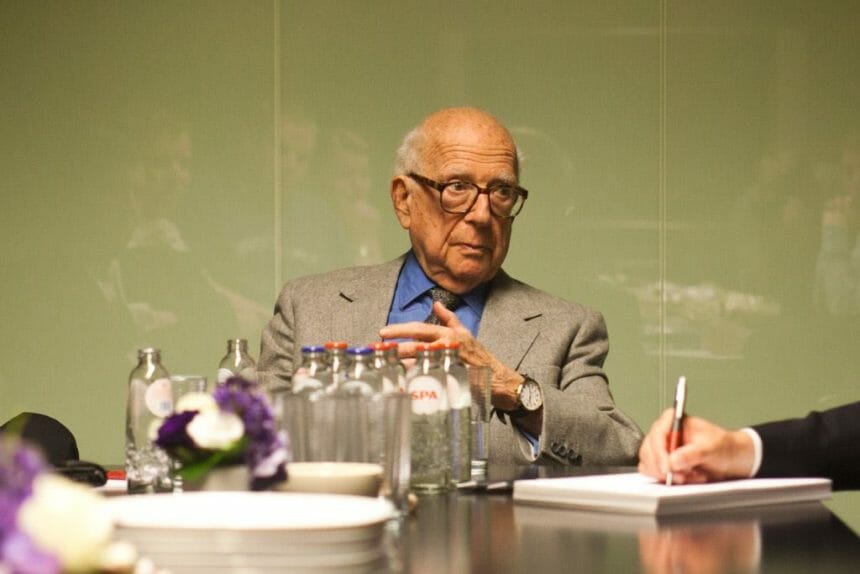The man behind the concept of direct
Lester Wunderman is credited with being the driving force behind direct marketing as it is known today, with his theories an integral part of the product promotion mix for today’s pharma direct marketers.
In 1959, he built Wunderman, Ricotta & Kline, which became the world’s largest agency specializing in mail-order advertising. Today, the agency, known simply as Wunderman, serves pharma clients Novartis, Bayer, Pfizer and AstraZeneca. Wunderman’s RTCRM unit does work for Abbott, Sanofi-Aventis, Berlex and GlaxoSmithKline.
Wunderman’s ideas early on helped launch consumer products such as the American Express card, boosted Time Inc.’s magazine division circulation, and helped to make the ZIP code an accepted and widely used part of the postal system.
As if this weren’t enough, he is also credited with coining the phrase “direct marketing” and developing its theories.
In a speech he gave in 1967 at the Massachusetts Institute of Technology, Wunderman offered up, for one of the first times ever, a definition for directly marketing to perspective customers.
“I believe the term direct marketing is more appropriate than mail order selling…direct marketing is where the advertising and buying become a single action…We are living in an age of repersonalization and individuation. Direct Marketing sells while the thrust of selling energy is at its greatest force…The ultimate participation in an advertisement is the fact that you can buy from it. There we have another definition of direct marketing. It not only gets the order, but takes it as well. Advertising…must not only sell the consumer on the idea of trying the product, but it must cause him to continue buying it as well. ”
Wunderman, now 84, remains active in the world of direct marketing and currently serves as chairman emeritus at his namesake agency.
Early in the computer age
Computers had already become a relevant component of the pharma marketing mix nearly 40 years ago—according to an article in the May 1968 issue of MM&M by Bruce Ross, VP of marketing at Fisher-Stevens, and John White, VP of Donald Fitzsimmons, Inc.
“The computer provides the ability to implement new marketing plans of action,” he said. The computer and mail, when properly teamed, can comprise one of the most effective, and rewarding, operations within the pharmaceutical industry.”
By 1985, computer technology had become commonplace in both advertising analysis and management of direct mail promotion, MM&M reported in its October 1985 issue.
“In the area of direct mail promotion, computers have had their impact. ”
The article charted the progress of new technologies.
In 1982, “many of the electronic media were brand new; some had not even become available as marketing tools,” it reported. Video seminars; laser discs; PCs–we were just getting used to the vocabulary. It was as if a good fairy had suddenly presented the industry with a basket of goodies, though some thought of it as more like a Pandora’s box.”
Recent campaigns focus on education
Launched in late 2005, Levitra’s “Men’s Facts” was a breakthrough campaign met with success in re-positioning a third-in-market brand. By focusing on the cardiovascular causes of erectile dysfunction (ED), the campaign mobilized men by shifting blame to their condition. The combination of education-based direct response television with a branded conversion campaign drove scale.
Viagra’s direct marketing campaign was launched in 1998 and had an extremely empathetic marketing focus that aimed at liberating men from the stigma of ED and enabling them to consider Viagra as a new option. Patient support began with education. The campaign also addressed a key purchase barrier, with its “Value Card” offering a way to get a free Viagra prescription.
The consumer launch of Cymbalta in 2003 is considered by many as a prime example of the use of education-based broadcast TV to prepare the market and drive consumers to learn more about the physical and emotional symptoms of depression.
Zoloft gave patients tools to help them determine whether they were suffering from depression. The “Knowing More” patient support program helped address the issue of feeling better holistically.
Sanofi-Aventis Allegra used an early innovative direct marketing campaign using the
memorable wind surfer. The advertisement carried a toll free number. Aventis developed a loyalty program named “Allerdays.”
Voice-response revolutionizes RM
By 1990, automated voice response technology had advanced tremendously.
In July 1990, MM&M wrote about “the decade of relationship marketing” in “Automated Voice Response: Key to Productive Relationship Marketing.”
“Relationship marketing is more than just a buzzword of the new decade,” author Al Barbiere of the Abcom division of Clark-O’Neill, wrote. A major component of relationship marketing was considered to be Automated Voice Response (AVR).
“The only real limitation to AVR programs is the caller’s attention span…AVP doesn’t supplant the traditional media, such as journal ads, direct selling, direct mail, samples, radio, TV, or desktop media.”
DATELINE:
1963: Five-digit ZIP code had now been assigned to every address in the US. By 1967, US Post Office required mailers of 2nd and 3rd class bulk mail to presort by ZIP.
1967: AT&T introduced toll-free 800-numbers, offering a new advertising medium for customers seeking personalized service. Exploded in the 1980s, when centralized databases allowed businesses to have a single nationwide number.
1970s: The birth of Cable TV gave rise to a new medium delivering entertainment and advertising.
1973: The Direct Mail Advertising Association changed its name to Direct Mail/ Marketing Association. It became the Direct Marketing Association in 1983.
1980s: Introduction of automated voice response technology. By 1990 it was being used by pharma marketers to promote directly to doctors and consumers.
1996: The Health Insurance Portability and Accountability Act established national standards for electronic healthcare transactions, requiring truth and precision in the developing of relationship-marketing efforts. Several state laws and regulations were approved limiting creative components of pharmaceutical direct marketing programs.
From the October 01, 2006 Issue of MM+M - Medical Marketing and Media








